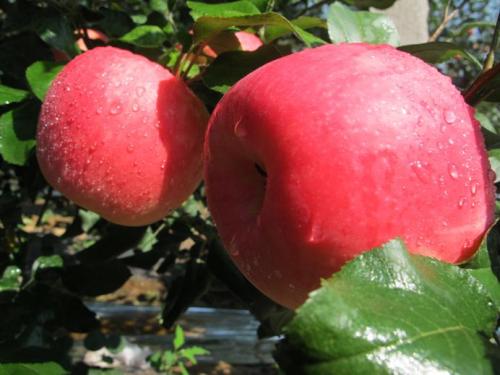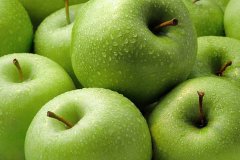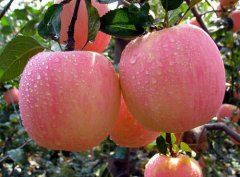According to the introduction of American honey crisp apple varieties, how does honey crisp apple taste? is it a hybrid variety?
Honey crispy apple (Malus pumila) is a cultivated apple variety (cultivated variety) developed by the Horticultural Research Center of Minnesota Agricultural Experimental Station in Twin cities of the University of Minnesota. Honey Crispy ((Honeycrisp)) was designated as the MN 1711 test brand in 1988, patented in 1988 and released in 1991. It was once abandoned and has quickly become a precious commodity, and its sweetness, firmness and acidity make it an ideal apple.
"... Apples cannot be propagated, stored or transported well. It grows for taste: crisp, with a balanced sweetness and acidity. " It has larger cells than most apples and breaks when bitten. Fill your mouth with juice. Honeycrisp also retains its pigments well and has a relatively long shelf life when stored in cool and dry conditions. The name Honeycrisp is a trademark of the University of Minnesota, but university officials are not sure about its protection in 2007. It is now the official fruit of Minnesota.
Honeycrisp apple blossoms are self-sterilizing, so another apple variety must be near the pollinator to get fruit. Most other apple varieties sprout Honeycrisp, as well as a variety of begonias. From seed planting, bees will not be able to achieve. Trees planted from Honeycrisp apple seeds will become hybrids of Honeycrisp and pollenizer.
Young trees usually have larger fruits with lower density and good color, while mature trees have higher fruit density and poor size and color quality. Fruit density can be adjusted by removing flowering clusters or young fruits to counteract this effect. Due to the low crop density, the pulp is usually harder. Bitter pits disproportionately affect bees, usually 23% of the harvest is affected.

- Prev

What's the taste of Australian green apple? Is the Australian green apple delicious? where is the production place?
It is one of the most famous apples because of its bright green skin, famous sour taste and great versatility of the kitchen. But how much do we really know about Australian green apple? What kind of apple is Australian green apple? About how Australian green apples are formed
- Next

Pink Beauty Apple characteristic Origin introduction, Pink Beauty Apple Champagne Flavor planting time
Pink Beauty is an apple variety. It is one of several varieties, and apples that meet the quality standards can be sold under the brand name Pink Lady, which is often called apple champagne. The Pink Lady was originally created by John John Cripps in Dali, Western Australia.
Related
- A course of planting techniques and methods on how to grow carrots
- How to plant the latest tulips?
- Is it better to pick tea in the morning or in the afternoon? When is the best time for tea to be picked? what is the third or fifth tea?
- Launch Yuanxiao Happy combination Haocha + Tea Yuan healthy Taste
- Penghu Tourism "Fireworks 20 Parade with You"
- 2022 West Lake Happiness holds "Digital Revitalization Voucher" and draws iphone13 and laptop.
- Banqiao Fuzhou social houses are designed to change start-up combined with police elimination to create a safe and livable environment
- The convenient measure of "mechanical weeding" in Xinbei has been abused and the Agriculture Bureau has imposed heavy penalties on the illegal land consolidation.
- Changgeng University Joins Hands with Four Memory Factories to Rescue Memory Talent Shortage
- The list of Taiwan's top 100 MVP managers is listed by the Director-General of the Farmers' Association of Sanxia District.

